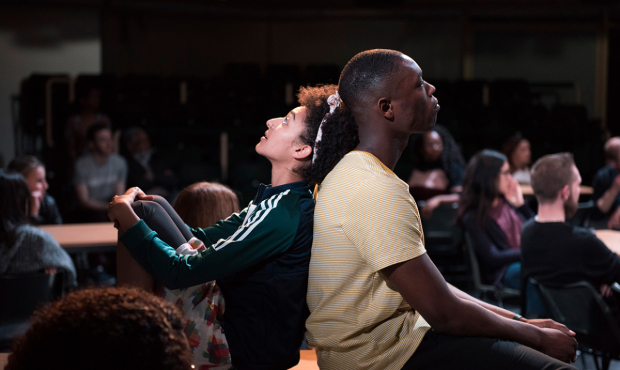What American theatre can teach us about diverse casting
Matt Trueman discusses the ways in which diversity can be presented onstage, compared with those overseas

© Stephen King
Whenever I come to New York City, I’m always struck by how much more diverse than London this city seems. Not just seems, but is: 56 per cent of New Yorkers are non-white, compared to 41 per cent of Londoners. That shifts the sense of your surroundings. It lessens the notion of majorities and minorities. Instead, the experience is one of a mix – genuine multiculturalism – exacerbated both by a tourist’s eye and the city’s cultural geography.
To travel through New York is to find yourself amid different demographics in different parts of town. Chinese-Americans in Lower East Side, Italian Americans a few blocks up. Brooklyn’s black and white neighbourhoods sit side by side. You notice the shifts like changes in the seasons. While the same is true of London, albeit to a lesser extent, one rarely navigates one’s own city with the same spirit of roving exploration.
It seems to me that this diversity knocks onto the stage – though nowhere near as much as it ought to. As a recent report here laid bare, American theatre is no more representative of the population at large than British theatre. Both are battling to improve diversity against in-built structural racism and extant privileges. Nonetheless, to British eyes, New York’s stages can, in places, seem far more genuinely diverse than those back home.
In British theatre, diverse casting seems consciously created
Last time I was here, two years ago, I caught a performance downtown at Soho Rep – an off-beat musical called Futurity about the pioneering mathematician and proto computer scientist Ada Lovelace. Its cast felt diverse in a way I’ve rarely seen in England: no majority, no minority. White, black, Hispanic, Asian-American, mixed race all sharing a stage on an equal footing – and, crucially, in a show that had nothing to do with race or colour. This wasn’t diversity as political or aesthetic choice – at least, not in an overt or demonstrative way. It was diversity as a means; diversity that just happened to be. It seemed like the most natural thing in the world.
Often, in British theatre, diverse casting seems somehow consciously created. Rather than a reflection of society at large – equal opportunities giving everyone an equal shot at every available part – it feels almost curated; as landscaped as a well-planted garden. It can feel as if directors and casting directors have agreed which parts can go to actors of colour.
How often, for example, do you see white leads with black supporting actors? How often are minor roles palmed off onto actors of colour in what seems like a bid to balance the books? Take Chichester’s King Lear – not because it’s unusual, just because it was recent: a black Cordelia, a black Cornwall and the eight biggest roles, all white. That dynamic’s so common, it’s unfair to single one show out.
This sort of tokenism – and it is tokenism – doesn’t simply prevent all-white casting, it also somehow flags up the fact. In a sense, diverse casting signifies its own diversity without being truly colourblind.
Until landscaped diversity becomes natural diversity we won’t have truly colourblind casting
There’s a more political version of that – diversity in casting that advocates diversity in communities. It happens, often, in a more utopian theatre. Shows like Against at the Almeida or the Royal Exchange’s Our Town deploy diversity as a statement – this is what the world should be like. Again, it becomes a sign of itself. Shows seem to stress their own internal diversity. They make difference conspicuous. One technique involves casting actors with a visible disability – and since it’s usually only one, it looks a lot like tokenism. Diversity that flags up the fact of itself. Could such casting be a kind of virtue signalling?
None of this is, in itself, bad. Quite the opposite – it’s progress. But it’s vital we recognise that it’s a long way from job done. Until landscaped diversity becomes natural diversity, until diverse casts aren’t curated but created unthinkingly, we won’t have truly colourblind casting. The issue, as I’ve written before, is that there’s still a norm. As long as white is deemed neutral, colour remains significant – even if it only signifies itself.
Talking to the actor Youssef Kerkour recently, he suggested a rather fascinating theory. Having trained in America and begun his career in New York, he suggested that America places much more stock in an actor’s individuality than Britain. Here, training tends to turn out identikit actors with impeccable technique. Where an American actor retains their native accent and physicality – at least in part – Brits leave school speaking perfect RP and moving like someone schooled in Alexander Technique. The result, he reckoned, is that American stages can seem genuinely diverse – or rather multicultural – where our stages erase such cultural differences. Diversity becomes somehow superficial: a matter of skin colour, not speech, style or identity. It’s diversity without real difference. That’s the opposite of diversity – homogeneity.















